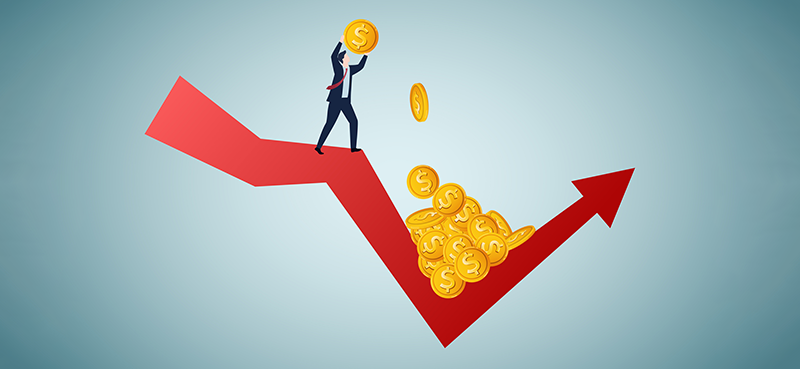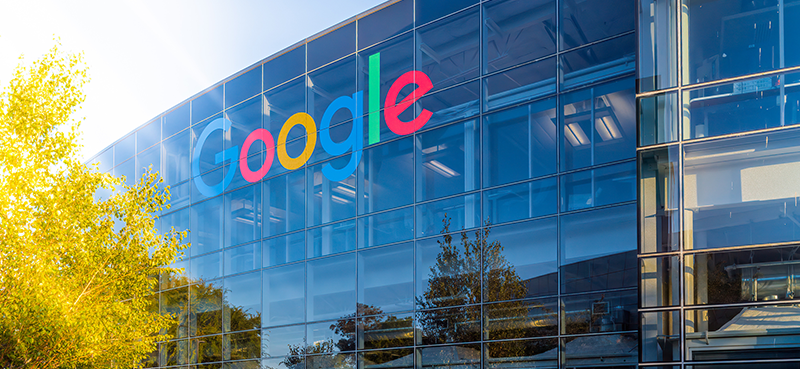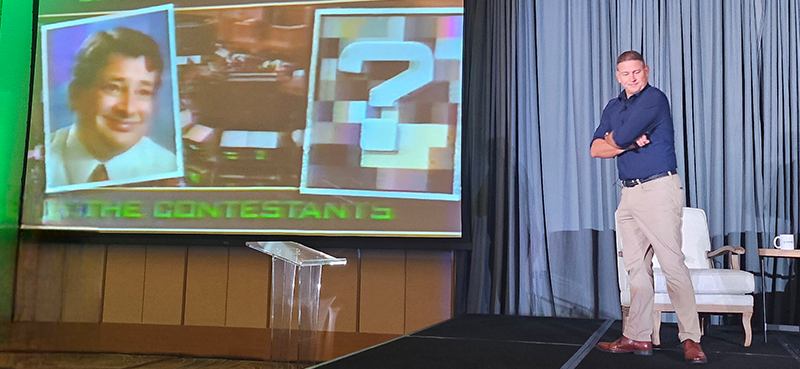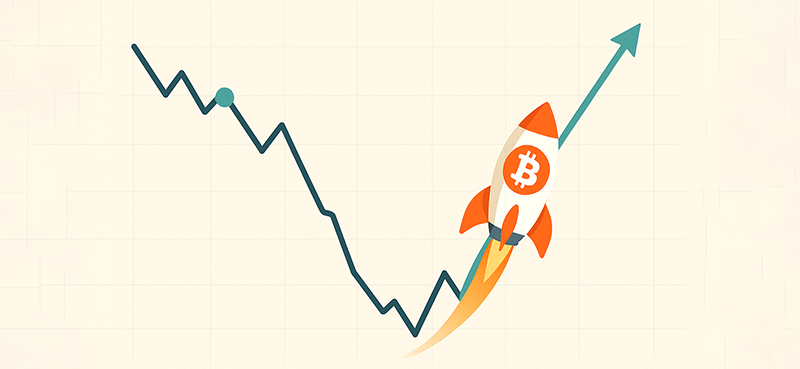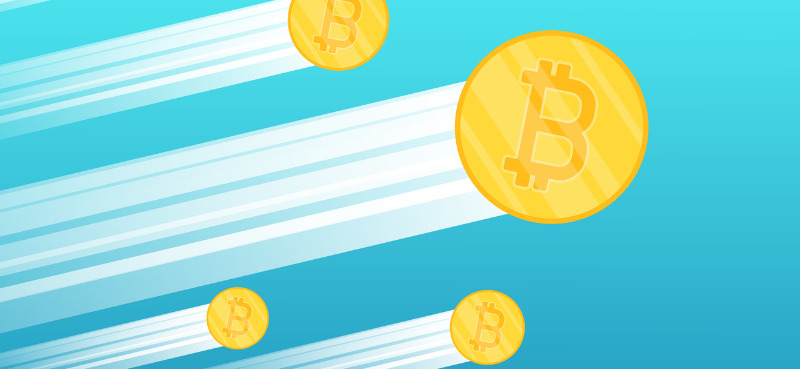John Petrides, portfolio manager at Tocqueville Asset Management and fan-favorite guest, is back on the podcast to discuss what’s moving these markets.
He explains why the Fed is nearly done with its fast-paced interest rate hikes… why it wants mortgage rates to be around 7% next year… and when we should expect it to start lowering rates.
We discuss why a soft housing sector and rising unemployment will be good for the stock market, especially later in 2023… and the three major headwinds for the market going forward.
John shares which sectors to look at in this market… and whether bonds will outperform stocks in the months ahead.
Finally, John discusses his fantasy football teams… and highlights a relatively under-the-radar sport he’s just getting into.
- The Fed will slow the pace of rate hikes [4:53]
- Why John is bullish on the second half of 2023 [8:25]
- Markets are facing three major headwinds [15:48]
- John’s favorite sectors right now [23:30]
- Will bonds outperform stocks over the next six months? [31:49]
- John’s new love for one sport [38:58]
Wall Street Unplugged | 978
The 3 biggest headwinds for the market
Announcer: Wall Street Unplugged looks beyond the regular headlines heard on mainstream financial media to bring you unscripted interviews and breaking commentary direct from Wall Street right to you on main street.
Frank Curzio: What’s going on out there? It’s December 1st. I’m Frank Curzio, host of the Wall Street Unplugged podcast, where I break the headlines and tell you what’s really moving these markets. So, I want to jump right in here with a great guest, who’s John Petrides, portfolio manager at Tocqueville Asset Management. Huge favorite of yours, I know that based on downloads. And I can see why, since he always shares new ideas with you, and also able to weigh in on everything that’s going on. We got the markets, economy, the Fed, including Powell’s comments from yesterday afternoon, which pushed the markets higher. Let’s bring him in. John, what’s going on, man? How’s everything?
John Petrides: Hey Frank, thanks for having me back on. Appreciate it. Good seeing you.
Frank Curzio: Good seeing you too. So, explain the markets to me. Because I always look at it from the individual investor, who listen to people like me, listen to you, who are just going about their business and say, “Hey, I want to listen to podcast,” or listen to certain people the like, and I think in this week I realized that China growth is absolutely done, and the next day, it’s perfectly fine. And then, I realized that the Fed is going to slow interest rates, which I guess you could interpret that however you want. It could mean 25, 50 basis point hikes, which is slower than 75. And then, after Powell speaks, kind of says the same thing and the market rolls higher, especially growth stocks. And this is just daily things that are going on with the market. It’s almost like you’re trying to balance. How do you handle this kind of volatility with your clients, where it seems like everything’s bad, everything’s good, everything’s bad? Where it’s almost hard to hold stocks with the volatility we’ve seen in some of these names.
John Petrides: It’s been a tough year, especially if you’re at a trader. We are investors. We definitely take a long-term time horizon, to when we’re buying a new position or selling out of a position. But the volatility this year, I don’t know the numbers, but I would presume that the percentage of trading days this year where the market, the S&P 500 has moved north or up or down 1% on a per day basis has to be some of the highest we’ve seen, definitely since 2008. I mean, the whole year has been massive moves of 1% greater or less. And it’s kind of like if the market doesn’t move a percentage point or greater, you’re kind of like, “Well, it’s a quiet day.” Meanwhile, last year, there was no volatility at all. So, if you’re a trader in this market, good luck because the whip saws are really profound.
Frank Curzio: So, I like talking to analysts like you, lots of experience, because for me it’s never about pounding the table on my thesis. I want to talk to people who have a different opinion and I don’t know if you do or not, but I’m struggling to find out because the bullish case for stocks I see over the next, say 12 months to 24 months, even 12 to 18 months, is that we need to see unemployment skyrocket. We need to see earnings come down sharply, which are going to come down sharply because inflation margins are getting tight. Sales are good, but let’s see how good those sales were in terms of the margins that they generate through the holiday sales.
Frank Curzio: We’re hoping for demand to slow incredibly, again something else that’s going to hurt earnings. This is the bull case I’m talking to you about, but at the end of the day, the Fed is not… We should stop throwing around to word pivot. Pivot means that they’re going to reverse and start lowering rates, which is not going to happen for a very, very long time. They could stop, but even when they stop… Well, look at, even after Powell’s meeting yesterday, and stocks went high. I don’t find out what he said differently. And even afterwards, if you’re looking at Fed funds futures, they still have a terminal rate, which the peak rate at 5%. When they get there at 5%, they’re not lowering anytime soon. How could we expect earnings to hit record highs next year when interest rates were basically zero, if you’re looking on past years, but now, they’re going to be so much higher? Which, we’re seeing demand fall off a cliff in housing, interest rate sectors, and who knows what the recent 75 basis point hikes and further hikes that are coming are going to do over the next six to nine months in the market?
Frank Curzio: I’m finding it hard to find the bullish case for the market in general. Not every stock, but for the market in general, it seems like you got to be careful here, but poke holes in my thesis if you can.
John Petrides: Frank, I think the way you articulated your question captures the current environment because your question was so long, you were running out of wind to say your question, and that’s the point of what’s going on is that… Let’s unpack it in three ways. Let’s unpack the Fed, let’s unpack the economy, and let’s unpack the markets because people are confused. And everyone should be confused because when you have an unemployment rate of 3.7% and people are talking about recession, something doesn’t make sense.
John Petrides: So, let’s unpack it. Let’s unpack the Fed first. I was at a conference two weeks ago where former Fed chair Bernanke spoke, and I thought he articulated the Fed policy very well. He said there are four stages to what the Fed is going to do. They’re rising fast, they’re going to slow down the pace of their interest rate hike, they’re going to pause and then they will adjust. So, we are at the end of the Fed raising rates at a fast pace.
John Petrides: Listen, we came the year with the Federal Reserve at 0% interest rates. This time last year, Frank, the Fed was still buying assets. Think about that. So, we came in at 0% interest rates. The Fed didn’t start raising rates, they didn’t start tightening until March. So, we are essentially nine months. In nine months, the Fed has gone from zero percentage rates, to now, we’ll be over 4% by Christmas time. They’ve gone from buying assets, to now they’re rolling off assets at $60 billion a month. So, massive tightening. They’ve pulled massive liquidity of the economy. So, that massive rapid pace is now slowing.
John Petrides: So, instead of 75 basis points, we’ll do… They’ll probably do half of 1% in December. I would assume half of 1% in January or February. And then, maybe a 25 basis point to get us to 5%, 5.25%, something like that, by March. What the Fed in my opinion… So, then let’s go to back to Bernanke’s comments. We increase fast, we slow down the pace of increases, and then they’re going to pause. They’re going to let that marinate, Frank, like your Thanksgiving Turkey, it’s going to sit in a brine for… Until the summer. You know why? Because the Fed doesn’t want… In my opinion, the Fed wants a 30-year mortgage to have a 7% handle on it going into the housing market season, the spring season. The Fed does not want a head fake here and a 30-year mortgage comes down below 7% and people say, “Oh, I got to buy now because interest rates are lower.” They want that to sit high. They want to make sure the housing market continues to go down because the housing …. when housing slows, there’s so much of a ripple effect that slows the rest of the economy down.
John Petrides: So, they’re going to let interest rates, in my opinion, marinate until the summertime. By then, hopefully, inflation should be with a four handle by then, below 5% in the summertime. Then, the Fed will start talking about adjusting. So, we’ve risen fast, we’re slowing the pace of rising, we’re going to pause and then the Fed will adjust. So, then they start talking about adjusting. Then, they start talking about, “Well, maybe in the fall, or they come in 2024, inflation should get below X, and then we can start maybe reducing the pace, with which we’re rolling assets off the balance sheet. Maybe we cut interest rates.” I would suspect that by this time next year, inflation is hopefully has a three handle on it. 3%, 3.5%, something close to 4%, something like that. I’m hoping the Fed is now talking about reducing interest rates or has already started to reduce rates. If they were at 5%, five and a quarter percent by March, maybe they’re at 4.75% on the Fed funds rate this time next year. Because out of all that, inflation should have slowed because the economy should be in some sort of recession. The economy should be slow enough that we should be in recession.
John Petrides: So, that’s the Fed, now let’s talk about the economy. The Fed is trying to steal housing. You want to slow the housing market that has a ripple effect. You increase the cost to borrow money, so companies cannot in reinvest and they have to lay people off. So, then you lay people off, and that again should reduce wage growth. That should reduce rental growth. Those two components are massive in terms of the inflation index. And then, that should slow the economy.
John Petrides: So, then now, let’s talk about earnings. Margins are definitely off their peak. Margins in the S&P 500 peak at around 17%, we’re now at about 16.5% percent, going lower for sure. There will be ultimately earnings growth this year. Next year, earnings will probably come in lower. And what you should ultimately have in 2023, and why you’re saying the bull case for stocks and why they could rise, is the Fed will be done and reversing course on interest rates, and earnings should have re-rated lower.
John Petrides: And part of the difficulty that stocks face this year was companies by and large did okay. The problem was, Frank, 2021 was so strong. So their comps, their comparables, the year-over-year growth, the hurdle rate was so high. Think about it from if you’re in the Olympics and you’re pole vaulting. Every time you hurdle the bar, the bar goes higher. Well, we were at 20 feet to pole vault over and guess what? We hit the bar. So, now the bar is lower. What’s going to happen next year?
John Petrides: Hopefully, commodity prices stay range bound, this year in 2023, compared to 2022. So, you don’t have that rate of change, massive gap. You’re going to have companies lay people off and not hire. That’s going to help margins. You’re going to have less advertising spending, in SG and A, as they call it, selling general administrative expenses, that should help margins. So all those things, companies will fight to offset a declining top line.
John Petrides: Companies’ top line, their sales, should slow next year. So, companies will try to protect their earnings by cutting costs and buying back stock. That’s going to be their last line of defense here. But what that sets up for though is ’23 into 2024, you should be at your margins have reset, the Fed has reset, stocks should have weakened at some point in time and you could be off to the races. So, what I’m thinking is that you have a continued volatility in the first half of 2023, and I think you would have a stronger stock market rally into next year, into the end, into 2023. I think that potentially sets up actually another strong stock market rally into 2024. That’s what I’m thinking.
John Petrides: What throws ointment into all of this is that the recession that we head into is more severe than what I’m thinking, number one. Geopolitical risk goes to the next level. Russia goes nuclear, China invades Taiwan. You have rumblings now with South Korea, North Korea, something like that. And then, the other thing that you’re seeing it on the crypto market with FTX and all that stuff, Frank, 2021 was a banner year in the private equity market. Private equity has the luxury, unlike the public markets, is that they can wait to mark the valuations on their investments in the following quarter or the following year. They could drag their feet and the public markets, you can’t.
John Petrides: The public markets, the reason why the public markets are being so volatile, is companies are going to be marked to market daily on where interest rates are. That’s moving stuff. Private equity, you don’t have that. So, the day of reckoning is coming on the private equity market, all those 2021 investments are going to have to be marked lower and a lot of the leverage was pumped in the system. So, if you have private equity companies that are out there that took on too much leverage and their assets now marked lower, what happens then within the credit markets? So, I’m not saying… That’s something where my intent is up, where I’m watching to see if there’s any risk, where that could impact the credit markets. So, I’m giving some ideas of what could throw the flies in the ointment to what I think next year could ultimately be a significantly better year for the stock market than 2022, for sure.
Frank Curzio: No, that’s well explained. I love it. I love it. Now, the thing I have a problem with is when I look at the markets, and that’s a great thesis is that it’s all contingent on the Fed lowering rates late next year. Yet, we don’t have any of the estimates out there. We don’t see inflation coming down below 4%, right? I mean, Goldman Sachs has it at 3.5%, the end of 2024, the Fed’s making it clear, we want to see it go back to 2%. Maybe they readjust and say, “Okay, 3% is good to 3.5%,” but if they at 4% or even 3%, to me that’s enough to stop. But at 3%, are they really going to reverse course?
Frank Curzio: And when I look at a market, where interest rates and higher interest rates take its toll, where… What happened? We saw 11 and half trillion injected into this market over the past couple years. You could debate whether you liked it or not, if it was BS or not, or if we needed that much, or whatever. The fact is that they were reducing the balance sheet, and they’re taking a lot of that liquidity out. When we didn’t have that liquidity, the S&P 500 earnings at the end of 2018, were 159, were 160. At the end of 2019, they were at 159. So, they peaked.
Frank Curzio: We saw that 2019 the markets were at high because we saw low interest rates below 2%. But that was the peak earnings. We’re removing this liquidity out of the market, and this going past interest rates. It’s not just interest rates going higher and then they’re going to peak. So, say we peak at 5%, we go to 4.5%, say you’re right, even towards the end of the year, they’re still reducing that balance sheet and taking a lot of that 11 trillion and trying to take out of the system that they put into the system. I’m finding it difficult, even with cost cuts, of how we have record earnings next year because that’s what we’re set. Because the earnings adjustment is… At the end of the day, I think we will both agree earnings drive stock prices.
John Petrides: That’s right.
Frank Curzio: I find it difficult to see how 235 is the estimate, which would be record earnings. They’re still set to grow next year, every year, based on analysts’ estimates, when 160 was the peak of 2019 when none of COVID happened, when we peaked, and now we’re seeing all this liquidity move, it’s… For me, I’m worried the adjustment’s going to be a lot bigger than what people think. I hope it’s not because if it is, we’re going to see this market come down, and I hope you’re right in your thesis, but it’s just, I love the conversation because there’s so many variables, it’s just like… And that’s why I like talking to you because I want to hear a different opinion of why… And I’m not saying all stocks, you’re seeing some great names down 50%, 60%, good management teams, insider buys, and you cover this area well at Tocqueville.
Frank Curzio: But for me, that’s the thing, just what companies… I’m seeing a lot of companies where I think it’s a good market for guys like you and me who analyze in the visual names, also sectors and ETFs and stuff. We’ll talk about that in a minute. But the days of growth over the past 10, 11 years, you’re looking at people with 10, 11, 12 years of experience. The only thing they’ve seen is they operate in a zero interest rate environment almost forever, when we’re not going to have that. So, where’s the growth going to come from, especially without China, especially not the Fed. That’s what I’m worried about.
John Petrides: Well, let me answer a question one way. I think the S&P 500 in particular, has tested its lows throughout the course of 2022, and I wouldn’t be surprised if we retest those lows in the foreseeable future. That would not be surprising, I think the market… See you had three, in deconstructing the market selloff this year, you had three hurdles. The first hurdle was beginning of January, Fed saying we’re going to have to raise rates, and higher interest rates means valuation multiples come down.
John Petrides: So, the first correction of the market was in technology, if you remember back in January and February. Then, you had Russia start the war with Ukraine, you added geopolitical risk, that was the next leg down. And then, you had in the spring, you had companies starting to adjust earnings more. So, you had those three legs adjust earnings downward for the first time. Analysts finally around May, finally started to pull some earnings estimates in for the year. So, you had these three legs.
John Petrides: Now, what have we seen over the past two months? You’ve seen valuation multiples increase because the market feels the Fed is near the end. The market can see that, okay, inflation has come over, the Fed has laid out a plan to get the 5% or so, but inflation has come down, we’ve seen peak inflation. So, the Fed has done its job. So, you’ve seen valuation multiples re-rate higher on the prospects that we’ve seen the peak of interest rates. But what you have not seen come through yet is earnings estimates coming down lower. Earnings estimates are definitely going to… I’d be surprised if earnings estimates are not lower. The energy sector is the only place where investors have visibility on earnings and energy is only 5.5% of the S&P 500, to put that in context.
Frank Curzio: 12% of the profits, 12% of the profits, that’s-
John Petrides: Yeah, that’s right. Yeah, that’s right. So, you have to look at things ex-energy, and you’re going to see significantly more downgrades in terms of earnings estimates, for sure. But you’re going to get to the point where earnings estimates are going to trough, valuation multiples trough again, the Fed is done. And I think then, that leads to a bullish case for stocks on the back half of 2023. It’s just going to be very choppy getting to there. Where could I be wrong?
John Petrides: But now the problem is, again, and this is why we focus on being long-term investors and not traders is, “Oh, my God, John’s saying the stock market could go down. And again, what do you do in the short-term? Do you rent the cash?” What if I’m wrong? You know what I mean? What if the inflationary numbers come down faster than expected?
John Petrides: What if there is some sort of resolution to Russia and Ukraine? There’s a million things. What if the Republicans and Democrats during a lame duck session come out and resolve the debt ceiling during a lame duck session, since you’re… And do concessions now, rather than waiting for July when we have to deal with kicking the can down the road again for the debt ceiling? And we hope we don’t have a repeat of 2011, where Congress held the debt ceiling… Held the economy hostage, held the country hostage by waiting until the 11th hour on the debt ceiling. So, I could come up with a million reasons, which is why you ultimately don’t… I don’t want to time this market, but expect the volatility that we’ve seen this year continue it easily for the first six… For the next five to six months of next year, for sure.
Frank Curzio: So, we’ve seen the best value because we’re seeing S&P 500, you’re still down, whatever, 15% on the year. Where are you seeing the best value? Because I am seeing value, and value is… It’s so funny because value used to be such a bad word. It’s a value trap, it’s a value… We want don’t value, we want growth. Where’s the growth? Where’s the growth? Obviously, we have problems going on with China. We have the Fed doing everything, raising rates, they not going to be there like they were during the last two, really during COVID, lowering rates is zero buying bonds. Same with the credit crisis, bailing out the banks, where they can’t do that unless they want to create more inflation. So, they’re not there this time around, right?
John Petrides: Right.
Frank Curzio: So, it’s hard to see what areas we’ll have growth. There are certain areas, but I think value comes into play here. IBM hit a 52-week high, or some of these names that have good balance sheets, good management teams, teams have been through this before, not just through COVID, but even past the credit crisis. And home builders that know how to cut and know exactly what to do during these times. Where are you seeing the most value here? And of course, you probably have to have a little bit of growth in there too.
John Petrides: Yeah Frank, before I answer that question, I want to make a comment that’s unique to probably a good portion of your listeners, about where we are with the economy and the Fed. Because there are many listeners, probably, to your podcast that have never experienced a business cycle in their life. And what I mean by that is, what’s unique about today’s environment is that we are in a classic business cycle. Slowdown.
John Petrides: Now Frank, go back to 2000. Go back to 2000. Think about 2000 of 2002. What caused the recession? Dotcom bubble burst, followed by 9/11, followed by Enron and WorldCom. That threw the economy into recession and it threw the stock market into three years of terrible performance. Those are all exogenous shocks, we didn’t know… An asset bubble burst with the dotcom, but we didn’t know what was going to happen after 9/11, and we didn’t know who else was cooking the books with Enron and WorldCom. Fast forward to 2008, what happened? You had the housing market, which was an asset bubble, blow up. And you had a Lehman Brothers collapse, and you had the Federal Reserve having to inject capital into the banking system of something that hadn’t been done since the Great Depression. Lehman Brothers collapsing and subprime mortgage market blowing up is an exogenous shock.
John Petrides: Fast forward to 2020. What happened to what threw us in the recession? We had a hundred year pandemic. Again, an exogenous shock. So, there are generations out there that have not seen a classic business cycle slowdown, like we saw in the ’60s and ’70s. What caused recessions in the ’60s and ’70s? The economy got overheated, the Federal Reserve had to raise interest rates. When you raise interest rates, slows the economy. Companies’ inventories build, they lay people off, they cut prices, and then eventually, the economy resets. It finds a new market equilibrium. We expand, and the Fed cuts interest rates; the economy expands, and we’re off to the races again. It’s a classic business cycle slowdown, that many generations have not seen since the ’60s and ’70s, because every recession we’ve had since then has been some exogenous shock.
John Petrides: I can go back really to 1987, where you had the stock market blow up. I could go to 1994, you had Mexico devalue the peso, 1997 a Thai baht devalue, 1998, long-term capital management blowing up. Those are all shocks to the system. This is the economy got overheated because too much money was pumped into the system, and now the Fed has taken the punch bowl away and is trying to slow an overheated economy, to bring inflation down. I think it’s very, very important that people understand because we haven’t seen a classic textbook business cycle slowdown in 40 years. So, I think that that’s unique but textbook at the same time.
John Petrides: But I guess to answer your question about where I’m finding value, I still think there’s value. I think when you look around, you landscape the world. I think European, large cap, European multinationals are trading at a big discount to US large cap multinational. So, for example, if you have a healthcare company or an energy company that’s domiciled in France, or Switzerland, or UK, or something like that, they’re domiciled outside of the US, so the dollar is the strongest we’ve seen in 35 years. So automatically, they get dinged because of the strength of the US dollar, because you have the currency exchange, but they may get 20% or 30% of their sales in Europe, they may get 70% of their sales outside of Europe.
John Petrides: So, those companies are trading at a big discount for two reasons. One, because the dollar is so strong and if they’re European, because of Russia, the proximity of what’s going at Russia and inflation there. So, I think there’s tremendous value, although the energy sector has really rallied hard. European-based energy companies, the super majors. So basically, think of the Exxon and Chevrons but of Europe, that there’s a great way to play it. I think the iShares Global Energy ETF, IXC, you get a 3.5% dividend yield, and you own the mega cap US-based energy companies, but you also own the mega cap European companies.
John Petrides: So, you don’t get caught, you get diversified through a basket of energy companies and the European majors, super majors, are trading at massive discounts to the US. And all of those companies have found capital allocation religion, like the US companies, the energy sector’s making so much cash flow right now. And they finally realized that, “Hey, if we pay down our debt, if we grow our dividend and we buy back our stock and we don’t pump more oil and we keep the supply of oil tight, we’re going to make a lot of money.” And that credo is been spread throughout the entire energy space. So, I think that is an interesting area, not only… So Europe, multi-national European companies, large cap, that pay a big dividend but they’re global in their base in, as a general statement, I think, is attractive. I think specifically, energy is really attractive because I think the European energy names are trading at a big discount to the domestic.
John Petrides: Now listen, energy’s been the best performing sector, and here I am pitching a sector that’s been part of a group that’s the best performing sector. But I think you have the cash flow and the visibility there and given the structure within the energy market, the movement to LNG, the weakness of supply, the amount of strategic petroleum reserves the US has blown through which has to be replaced. I think that’s an interesting place to be.
Frank Curzio: I love that thesis because we’re looking at… And I’ve done a lot of analysis on how technology companies are getting crushed from the high dollar, especially technology companies. I mean, you’re talking about even Nike, right?
John Petrides: Yep.
Frank Curzio: Nike said 20% of their operating profits are getting impact, 20… So, I think it was something like $5 billion. So, it’s like a billion dollars they’re up, or whatever it was. I mean, it’s insane number just for the dollar, but yet, if you’re looking at European companies have exposure to the US, that’s not a good way to play it. But let me ask you this, when it comes to… I’ve been told by so many people, this thesis for at least the last 10 years, that stocks, international stocks are so cheap. Whether it was Russia, whether it was Europe, whether it was China all. And the thesis has always been like, listen, you’re better off buying US companies with exposure in these places because I mean, that thesis has just seemed to never work out over the past 10 years.
Frank Curzio: Buying internationally, US has continues to outperform. You’d have periods that you can go back and you’ll see. But for the most part just, I can’t tell you how many people told me buy Russia pre-war, and didn’t work out, and European and stuff like that. So, what’s different this time? Is it the dollar? Because that seems like that could be very beneficial for those that are conglomerates and those that have a lot of international business and all the foreign brands that we actually see here that we buy. You can look at stocks like that. But is it just Europe or is it someplace else that you like as well as international?
John Petrides: Yeah, definitely it’s Europe, it’s developed, it’s large cap. I like energy, I like European pharma companies as well. Again, stable franchises, good balance sheets, good cash flow. I’m not necessarily advocating for European consumer or something along those lines. And again, I want to be… It’s developed not emerging market. I’m focusing more on Europe rather than China. So definitely, the dollar is at play here. If the Fed does hint at reducing interest rates and eases at some point in time, the dollar will come off its high. I think the valuation gap between domestic multinationals versus international multinationals, is very, very wide.
John Petrides: So, if there’s value to be had, I think that’s a space to be and energy in particular, I think owning a basket of these multinationals, where you get some US exposure, but you get the Europeans as well, I think is interesting. On the other side, Frank, to barbell that, one of the things that we’re doing for clients who had either excess cash or we run some balanced portfolios where we’re looking for income and fixed income, Frank, we’re buying 90 day T bills. I know this isn’t usually typically an equity focused… Your newsletter and show things like… We’re buying 90-day, so three-month and six-month treasury bills, where we’re getting over 4% yield, and you buy that in tax sheltered account like an IRA, what’s wrong with that? And when those mature come January, February, presumably by that time the Fed is going to have raised interest rates, probably another a hundred basis points. 1%. You figure if they do 50 basis, half of 1% in December, and let’s say they do half of 1% in January February, the yields on those will be higher. So, we’ll play that short-term all day long. Two-year treasury, you’re getting 4.25%.
John Petrides: For the first time. Frank since 2004, ’05 and ’06, in the fixed income portion of your portfolio, you could actually get income. We’re in the worst bond market in the history of the bond market. It’s going to be the first time ever. We always talk about the S&P 500, but the Bloomberg Barclays aggregate, for those not familiar with the fixed income market, the Bloomberg Barclays aggregate, the ticker is AGG, is the equivalent to the S&P 500 for bonds. When you say the bond market, you typically refer to the AGG. The AGG is going to be negative for two consecutive years. It has never happened before, ever. So, an environment where you have the stock market volatility is through the roof, investors who had some fixed income can’t find any protection.
John Petrides: But now, now you ask yourself the question, if I didn’t own it before, would I buy today? Today, bonds are attractive, and you don’t have to go very far, and you don’t have to own long dated bonds, and you don’t have to buy the crappiest credit to get yield. You could buy US treasuries for 90 days and get 4% on your return. And we’re doing that for clients because we have visibility, and we’ll take it.
Frank Curzio: And that’s a key. One thing we both agree on this, even if we have different opinions of how it would work out, is the volatility that we’re going to see over the next six months. So, it’s going to be crazy and-
John Petrides: Yeah, it’s going to be high.
Frank Curzio: Throw yourself in a two-year at… I think it’s actually 4.3, 4.4, risk free, compared to dealing with… Again, we’re talking about this week alone, where China was… Rising protests, crazy. And that’s a death sentence when you protest against the government. That’s how frustrated they’re with COVID policies, and the very next day, the government comes out, which very hard to believe what they say, but, “Oh, we’re probably going to pull back on it.” One day later, it’s okay. And same with the Fed. Everybody’s nervous now with the Fed, it’s just going through this volatility. We just talk about this week.
John Petrides: But Frank, let me ask you a question. Let me ask you question. A two-year US treasury right now, as you say, is about 4.5%. Over the next two years from today, do you think stocks will outperform 4.5% annually?
Frank Curzio: Wow, that’s a good question.
John Petrides: I’d say yes. I think stocks, looking back, two years from now on a compounded annual basis, stocks will outperform 4.5% but that doesn’t mean, you avoid the two year. But if I can go out six months… Now, let me ask you another question. Six months from now, if I could buy a US treasury bill and get 4.25%, is about what a six month T bill is offering, 4.25%, something like that. Do you think stocks are going to do outperform 4.25% in the next six months? You’re going to say, “I have no idea, maybe.” We had a day, two weeks to three weeks ago, where the stock was at 5% one day. But six months from now, you’re like, “I don’t know.”
John Petrides: But you could lock up 4.25% return for six months. Two years from now, I’m going to bet that stocks will outperform bonds over the next two years. But that’s the environment that we’re in. We’re this period of uncertainty, and you could play out a million different scenarios and assign a million different probabilities, and you know what? They all could be right. Each one has credence to it.
Frank Curzio: It’s interesting though-
John Petrides: So anyway, so sorry, I gave two really different scenarios here. But I think that the crux behind all of it is that I have visibility. I have visibility. I think despite the asset has done well, I think there’s continued visibility in the cash flow of the energy sector, and I think there’s visibility in high quality 90-day, six-month, one-year treasury bills where I can get 4% yield.
Frank Curzio: And it is an interesting question because if we look for the average investor who aren’t like us, who breed the markets, look at every stock, look at every sector and everything. So, we have great conversations about this, but I don’t know where the market’s going to be. I would tell you that Meta, I think would be 6% higher. I think it’s… Whatever, yesterday it was 4%, 5% higher already, whatever. But because it’s down 60%, 65%, I don’t know if it’s going to go lower than that over there, but when I’m looking at individual names and I’m seeing… So, a good example that you brought up was the oil sector where, I don’t know if I’m too crazy bullish on oil that have made massive moves.
Frank Curzio: We’re seen fracking, we’re seeing companies, US-based companies, even Exxons and stuff like that make nice moves, but which hasn’t follow as much is the oil services. And you mentioned international, and now, being screwed by Russia. I mean, they’re all talking about this massive growth spurt in huge drilling, all international, that these guys just… It was just negative on that balance sheet for such a long time, just getting crushed, losing money on this, where this is a big boom to that specific sector. So, when I’m looking at individual names, I could say, “Yes, I know that I could generate or I have confidence in what I know that I could generate those returns, but I’m not…” We talk about the marketing general where the whole market’s going to be. I’m not too sure. I do know there’s a lot of stocks that are incredibly overvalued, but when you’re really looking under the hood now, which you have to do, you just can’t buy any growth stock, like Disney and adding subscribers, and nobody cares how much they’re adding them for, now they care. Numbers matter… Especially with rates higher, debts higher, and you’re paying for this stuff.
Frank Curzio: I think it’s going to matter what individual stocks you actually have in your portfolio. So, we talk about the markets in general, I don’t know, but I know there’s a lot of stocks even though I’m seeing that still… That are down 60% that still probably have a ways to go because their growth profiles are still trading crazy valuations.
John Petrides: Yeah, I think when you talk about the energy services company, I’m torn because I see how short in terms of global supply is right now and what needs to be repaired because the global EMP majors basically shut off their CapEx over the last two years because the price of oil went negative. You’re not going to even incentivize when oil goes that low. So, my problem with the oil services guys is that they basically eat off the scraps from Exxon and those guys’ table. When those guys want to spend money, then the oil service guys do well. When they don’t, then they don’t do well. So, from a fundamental business standpoint, I wrestle with that because they’re so reliant on the EMP guys basically doling out the cash through them to spend.
John Petrides: But at the same time, you could have a massive CapEx cycle prolonged for a long time, just because energy stocks have been depleted so much. But again, I think your point is exactly right, is you have to… We’re back to good old fashioned stock picking, rather than-
Frank Curzio: Yes, who has more most international exposure? Who has the exposure to the conglomerates? I mean, this is things that we do which are fun, when people are probably like, “All right, enough of this. Just give us the name.” Which is cool, so-
John Petrides: Yeah, that’s right. That’s right. Yeah, that’s right, that’s right. Yeah, that’s right, that’s right.
Frank Curzio: And you shared names. So, you said some of your favorite ideas. Also talk about ETFs, which you’re offering at Tocqueville and things like that. I know people want to learn more about you as well, but I know that you guys have a pretty big ETF.
John Petrides: So, we build separate accounts for clients, which means that we pick individual stocks and bonds, but we also use ETFs and mutual funds. So, our bread and butter really is picking individual stocks and bonds. I chose to pitch an ETF here today, just for compliance reasons it’s easier than individual stocks. But I think directionally my team within clients, especially for those clients that are looking for cash flow needs, those are some of the ideas that we’re looking at. Short duration, high quality, fixed income.
John Petrides: And then on the other side of it, dividend producing equities and in this case, energy where I still think there’s some visibility. I’ve been on the show in the past, I’ve pitched energy and some of the master limited partnerships, the oil and gas pipelines, but this is more within the EMPs. Yeah, so I appreciate that.
Frank Curzio: And if someone wants to get in touch with you, they can just go to your website or learn more, plus you’re on TV all time, yeah, love it.
John Petrides: Yeah, yeah, yeah. So, go on our website under… You’ll find my name with all my contact information, more information about my team specifically at Tocqueville. We’re an independent registered investment advisor with the SEC and we can manage for tax efficiency, we build out individual portfolios for clients needing income, or growth, or capital appreciation. And then, I get to do fun things and talk with you, so it’s all good.
Frank Curzio: Just remember the small guys like me because now, I see you on TV all the time, and it’s great to see that success, man. You definitely deserve it. You can tell you put in the work. I love having conversations with you, and we always text each other, been friends for a long time, but I always really, really-
John Petrides: Same here, Frank. Yeah, absolutely. Same here.
Frank Curzio: I can’t let you go, I know you probably need to go, but I can’t let you go without talking about the last thing here, which is probably most important for many people is your fantasy football team. Because we always get an update. So, I’m in it this year because I’m so busy; I am in first place with a partner. I’m doing very, very well. But how’s your fantasy doing this year? We saw you in that.
John Petrides: So, I’m in three leagues. Three leagues, one of them mathematically eliminated. The second league, it’s a long shot to make the playoffs. And in the other league, with my son, we’re in second place. Yeah, so for three leagues, that’s what you’re probably are diversified. I have a shot on one of them and terrible on the others. So, I don’t know. I made some bets, Frank. I waited on Derek Carr in later rounds, hoping that with the receiver, I forget his name, and Josh Danadams and Josh Daniels that would work, and Carr has not been lived up. And I drafted Kyle Pitts early, the tight end from Atlanta, thinking that he was potentially going to be the next Jimmy Graham, and now the guy’s an IR, so that’s been-
Frank Curzio: It’s such a rush. It is.
John Petrides: Totally, totally, totally, totally.
Frank Curzio: That’s the thing with that, I mean, Barclay comes back is doing great, which is… You know, have to worry about that, picking them early because of injuries. But I just love it because it does bring people together, and it’s a lot of fun, and you always talk in, and you talk to-
John Petrides: Totally.
Frank Curzio: Friends, and you and your son, and stuff like that.
John Petrides: Frank, we have to have another conversation. This year, you know what I’ve gotten… The last couple years, you know what I’ve got into, I’m in a survivor pool for Formula One.
Frank Curzio: Really? That’s interesting.
John Petrides: I have no idea. It’s awesome, actually, I’ve done it… It’s awesome. I’ve had no interest in Formula One until this, and it is so much fun, and it’s super easy to do. We should talk offline about it. And then, there’s another one that I’m in, my son has gotten into soccer, and we’re in a Premier League fantasy soccer league, which-
Frank Curzio: That’s pretty cool.
John Petrides: I have no idea about, but it’s actually pretty interesting.
Frank Curzio: Such great bonding.
John Petrides: Soccer is significant, I’ve learned. My exposure to soccer is the World Cup and half the games I fall asleep through because they’re one, nothing or two, one or something like that, and everyone plays defensive because they don’t want to lose. The Premier League is not that. I mean, these games are three, one, 10 minutes in, and the athleticism… I don’t know, it’s been pretty eye-opening for someone who has cared only about football, baseball, hockey, and basketball my entire life.
Frank Curzio: It’s incredible even with the World Cup going on right now. So listen, thank you so much for everything. I really appreciate you coming on as always. Always get great advice and ideas, and yeah, hopefully join us soon, buddy.
John Petrides: Yeah, thanks Frank. Thanks for having me on.
Frank Curzio: All right, cool, cool. All right, guys.
John Petrides: Awesome.
Frank Curzio: So, great stuff from John. He’s a very, very good friend, even better person. I’ve known him for a while, but I always say, this podcast is about you, not about me. So, let me know what you thought of the interview. Any comments, questions, frank@curzioresearch.com. It’s frank@curzioresearch.com. Thank you so much for listening. I say this all the time and I mean it: I really appreciate all the support. I’ll see you guys next week. Take care.
Announcer: Wall Street Unplugged is produced by Curzio Research, one of the most respected financial media companies in the industry. The information presented on Wall Street Unplugged is the opinion of its host and guests. You should not base your investment decisions solely on this broadcast. Remember, it’s your money and your responsibility.
Editor’s note:
Later today, members of The Dollar Stock Club will receive one of John’s favorite sector picks…
It’s a fund full of industry giants that will benefit from the tight global energy market…
And after surviving the pandemic, these companies are in great shape… and focused on rewarding shareholders with fat dividends.




